Mar 17, 2021
Kumagawa-juku: Traditional townscape infused with fresh energy, Fukui Pref.
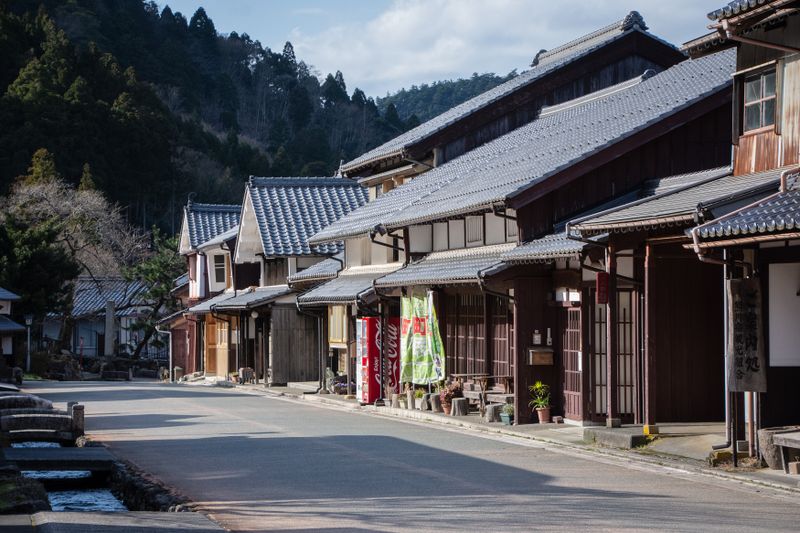
Back in its Edo Period (1603-1868) heyday Kumagawa-juku was apparently something of a hub for trade and commerce in what was then the Wakasa Domain in present-day Fukui Prefecture, central Japan. The post town set its stall between two great bodies of water -- Wakasa Bay to the West, Lake Biwa to the East -- and appears to have handled some of the traffic shuffling mackerel between seaside Obama and hungry elites in Kyoto.
“Heyday” is all about perspective though -- these days Kumagawa-juku looks pretty fine without a thousand head of horses and oxen trampling through town and chewing up the finery. And while the traffic of trade is now whisked through Fukui’s mountains and valleys on sleek highways Kumagawa-juku seems to be making nice with a new breed of resident and visitor.
Around 100 tightly packed rustic buildings sit astride a 1.4-km stretch of former highway that forms Kumagawa-juku’s main thoroughfare. It’s length enough for the town to have settled into three areas -- Shimoncho, Nakancho and Kamincho.
Most visitors to Kumagawa-juku are likely to start their stroll through town from the Kamincho area -- the upper part town -- as just below the main street is the Roadside Station Wakasa Kumagawajuku (for parking, toilets, a simple restaurant, and maps).

(Kumagawa-juku's Kamincho area)
Heading downslope from this elevated part of town, keep a lookout on your right for the facility of local ninja Yuichi Niino who gives experiences in ninjutsu -- the way of the ninja -- in the around 100-year-old restored building. Once inside you’ll need a keen eye to spot hidden stores of weapons and doorways disguising passages of escape for the illusive ninja who, perhaps contrary to popular image, actually preferred to flee from potential conflict.
Crossing over a tributary feeding the Kitagawa River which tumbles roughly east of the town you come to the Nakancho area. Nakancho reflects its meaning (middle town) as a town center of sorts by being the most active part of Kumagawa-juku. Gone are the pack horses and foot bearers though, replaced by a progressive group of young things furnishing the traditional townscape with new ideas and new energy.
If the ninja experience has left you in need of a more mellow experience, you could stop by LABORATORY × SOL'S COFFEE where you can chat with the young crew of drip coffee specialists while they sort you out with a nice hot (or cold) brew. Out the back is a quiet courtyard seating area while bench seating by the storefront affords views of the Kumagawa-juku foot traffic.
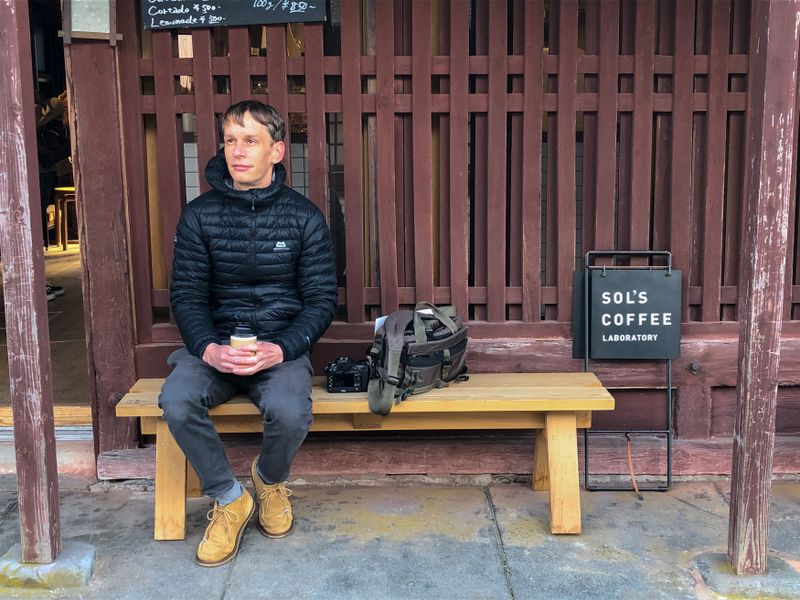
(Coffee at SOL's)
Next door to SOL’S, Yao-Kumagawa continues the theme of Nakancho, bringing progression to the area while guarding its heritage. From their atmospheric old townhouse base the team at Yao-Kumagawa offers activities and experiences to fit the seasons -- from snowshoeing in winter to fun by the river in summer.
Through Yao-Kumagawa’s satoyama kamado experience visitors can also try their hand at cooking locally grown rice, and using fresh local ingredients to boil-up a delicious soup by way of a kamado stove. Get your gloves on and your rugged serving tongs ready to stoke the stove fire and see if your nostrils are attuned to a light odor of baked senbei (rice crackers) which will let you know when the rice is done. Strictly no sneak-peaks of the boiling rice allowed!
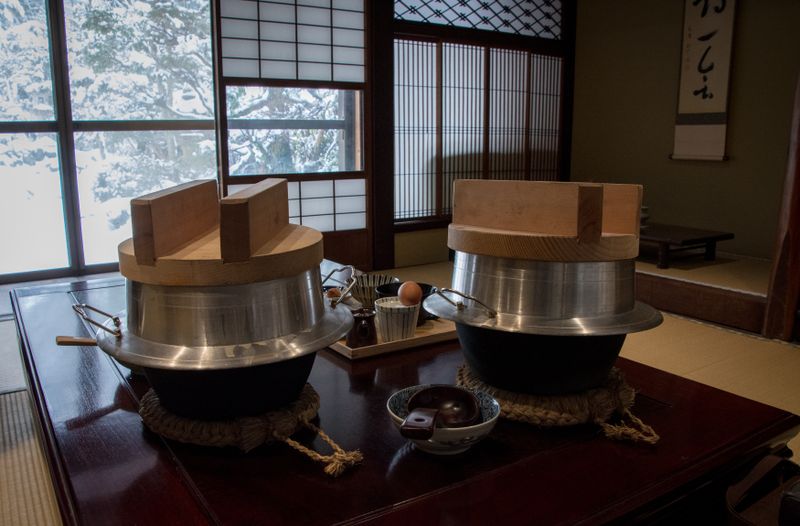
(Satoyama kamado experience)
Dine on your cooked rice and soup as part of a traditional Wakasa-region meal in the old townhouse interior.
Sharing the same building as Yao-Kumagawa is Hishiya share office where digital types can crack open laptops and get some work done in the shared work space.
There are a number of welcome distractions along Kumagawa-juku’s Nakancho area but don’t let them take your attention away from some of the structural features of the town and its collection of storehouses and townhouses, or “machiya.”
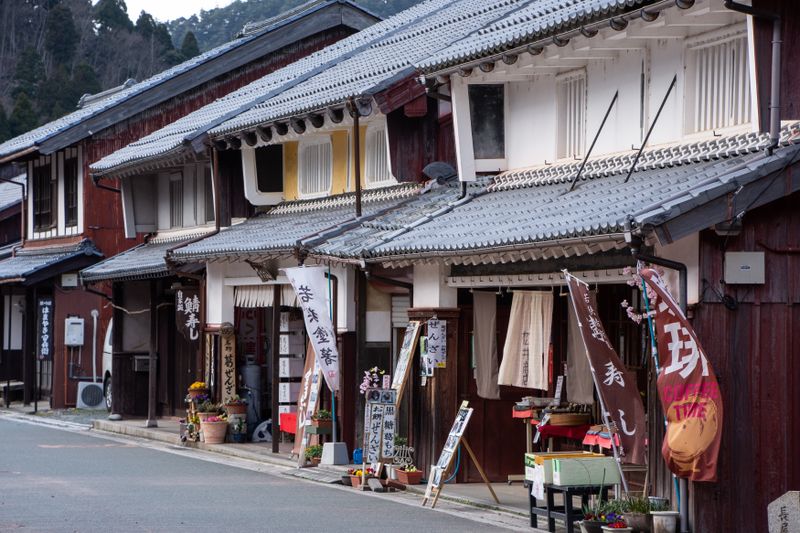
(Traditional buildings of Kumagawa-juku, Fukui Prefecture)
The two-story townhouses, for example, come in two types -- those using a construction called “tsushi-nikai,” in which the second floor is low-ceilinged and was used mainly as storage space. Townhouses using the “hon-nikai” construction have a second floor that is noticeably larger -- from the outside at least -- enough to have been used as a living space, like the first floor.
Some of the buildings in Kumagawa-juku also employ a construction called “sode-kabe udatsu,” a kind of small piece of walling protruding from both ends of the second-floor. These partitions of sorts served to prevent the spread of fire from one building to the next, a very real threat in Japan’s Edo Period.
Kumagawa-juku’s Shimoncho area is noticeably quieter, a good place then to take in the sounds of the trickling waters of the Maegawa which runs alongside the main street. Look out for the low flat stones that sit just above the water -- areas for washing back in the day.
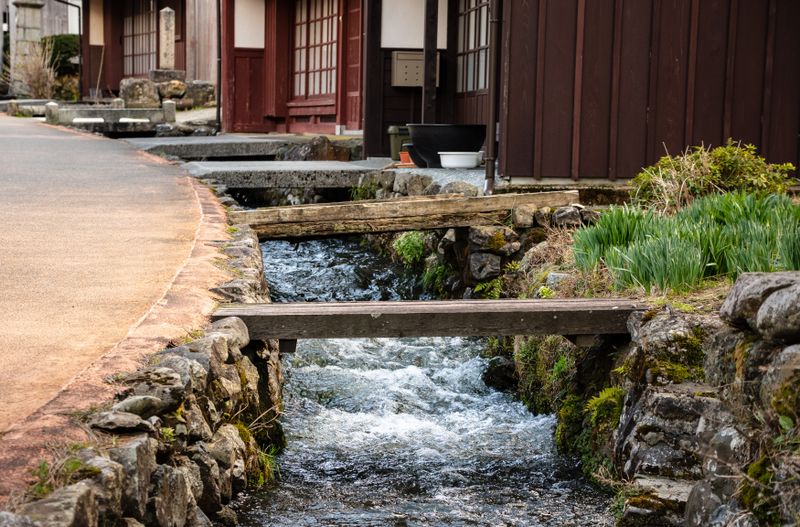
(Maegawa stream, Kumagawa-juku, Fukui Prefecture)
The peace and quiet of Shimoncho seems a good location for the accommodation facility Yao-Kumagawa Hotaru (part of the Yao-Kumagawa operation). Guests book the whole of this traditional home which has been warmly restored to maintain much of its traditional design while offering Western-style furnishings and fittings such as a sizable dining table, beds and a modern bathroom. Bring a good book and chill at the seating area by the front window.
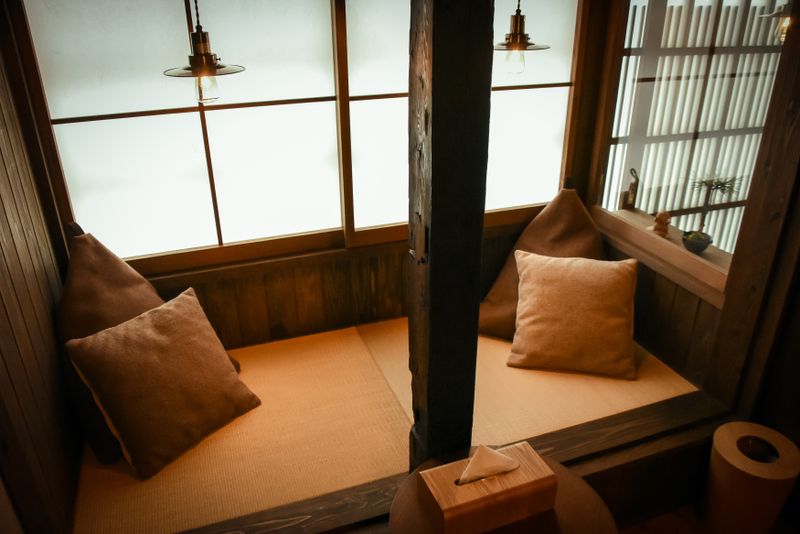
(Yao-Kumagawa Hotaru)
Video: Fukui Remote Quest - Tradition and innovation in Kumagawa-juku
Kumagawa-juku, Fukui Prefecture



0 Comments